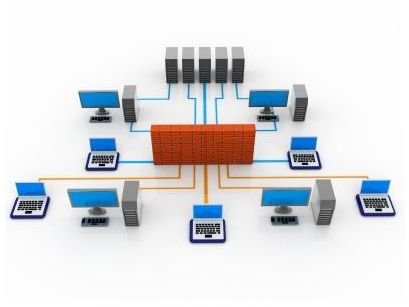Network Security Threats to Organizations
Network Security, Threats, and Attacks
“Computer security is at a crossroads. It’s failing, regularly, and with increasingly serious results.” [1] The weakest link in an organization may often be said to be the employees themselves (i.e., human behavior as a potential security threat), but not always! Even though the PC users within an organization are weak elements in any network security solution, organizations are also just as weak themselves. For instance, an organization might have network connections that are not configured (or properly configured), use network security tools that doesn’t support its purpose, or have created, implemented, and enforced their own security policy(ies) without consulting an expert; an organization setup like this is vulnerable to network threats and attacks.

Network Security
Network security is important and is an essential element in maintaining any network. It involves safeguarding computing resources, ensuring data integrity, limiting access to authorized users, and maintaining data confidentiality. Designing a secure network requires incorporating fault-tolerant systems and solutions. One such solution is for an organization to use a network access control (NAC) to control access to networks.
Network Threats
Many computer-related threats spread by means of a network. When a network has been targeted or hit with a threat, it will likely infect other computers and PC users if not stopped.
Organizations need to be concerned about the security of their networks as there are many threats (e.g., viruses, malware, adware, spyware, Trojan horses, and others) that can infect a computer on a network. The most common threats for an organization nowadays have been malware and spyware. These are just a few of the common network security problems that occur within an organization.
If a network is not scanned (i.e., use a vulnerability scanner) or makes use of one of several network security tools (e.g., a network protocol analyzer, network intrusion detection and prevention system, a sniffer, port scanner, etc…) available (often for free) on the Web, it will likely be vulnerable to a network threat. Often, a Network Administrator or an IT Administer or manager will oversee the security of a network, but they might not always able to find all network threats; therefore, it’s really every PC user’s responsibility to check, scan and clear each disk, CD, DVD, and e-mail attachments that may carry malicious content onto a network (e.g., Internet, Intranet, Extranet).
Security Attacks
Security attacks are often used maliciously to consume and destroy the resources of a network. When attacks are sent (often times by a hacker, criminal, disgruntled or ex-employee) on a network, they use critical system resources (such as the CPU and RAM) to disrupt and damage an organizations’ business operation, or to install some type of malicious program.
Note: Most network attacks fall into the category of Denial-of-Service (DoS): it’s when an attacker attempts to prevent PC users from accessing information or services.
Since network intrusion attacks are a growing threat to organizations, systems managers should add an IDPS, an intrusion detection and prevention system, to their security infrastructure.
Common Network Vulnerabilities
One such common device that can infect a network from inside a firewall is an USB Thumb drive. All it takes is someone to use the device to have it automatically execute malicious code upon connecting with a live USB port to jeopardize the security of many networks.Another device is a laptop, with its Ethernet port, can connect and tap directly into an internal network and possibly compromise, disrupt or damage it.
What to do: PC users within an organization should not be allowed to store on devices such as USB Thub drives or Laptops then connect to the businesses own network.
Networking Solutions and Tips
“The purpose of network security, quite simply, is to protect the network and its component parts from unauthorized access and misuse.” [2] In order for organizations to have a secure network, avoid threats as well as attacks, they must be be well-prepared and understand how to mitigate the threat and have control of its communications path. As important, it is the need for network security awareness training. Suggestions such as these will help an organization defend against security threats entering the network.
To recap, organization’s must…
- Be aware of today’s network security threats
- Understand that online social-networking sites can open the door to new security threats
- Apply security controls
- Setup a firewall to deny unwanted network traffic
- Use a NAC to protect and secure data and other IT resources
- Deploy an IDPS to enforce security
- Develop a security policy
- Provide employee awareness network security training
References
[1] Schneier, Bruce Schneier - Hacking the Business Climate for Network Security
[2] Bright Hub, Karishma Sundaram - Why is Network Security Important?
-
Cisco Press (Network Security Basics): https://www.ciscopress.com/articles/article.asp?p=170742
-
Threat List: https://www.iss.net/threats/ThreatList.php
Image: FreeDigitalPhotos - Computer Network (by jscreationzs)